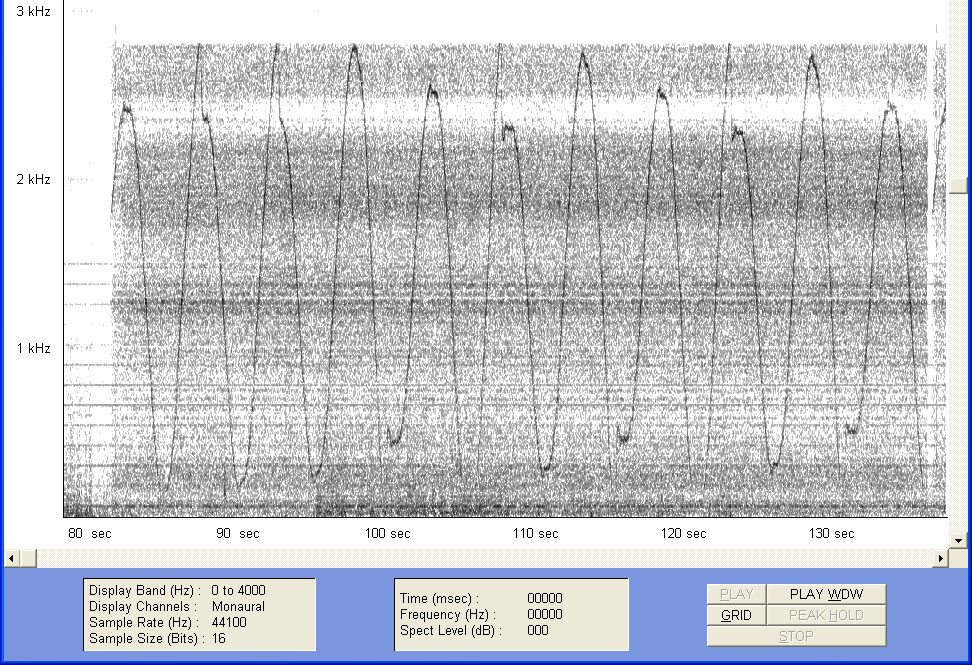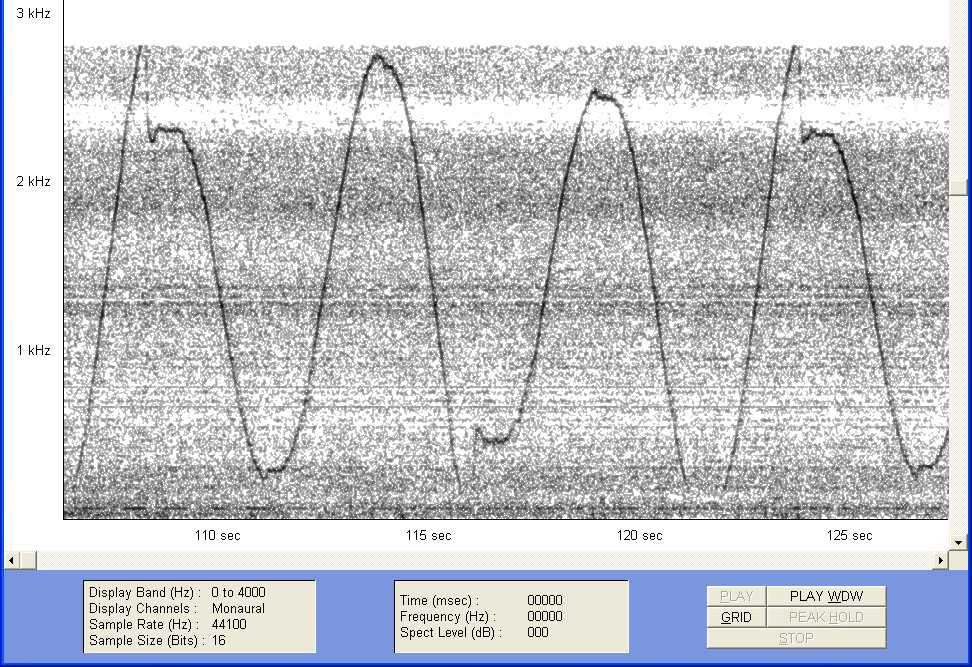No, almost certainly not an OTHR. If it is a radar of any kind it is one of the worst thought out waveforms I have encountered. Below is why I say that.
Notice how unstable the pattern is? Restart / stop variable times with glitches and odd shapes on either peak of the sweep? Really, really, not desirable for a radar. Every one of those steps on either side, and any irregularity there (several places you can see it doing odd things after that step), would be lost or erroneous data.
Notice the variable and very narrow bandwidth, under 3 kHz on average? Not desirable for radar as this would cause very poor range resolution. You essentially never see a radar with such a narrow width (except in test modes), although you might see a sounder that narrow.
That 5 second cycle time is also very suspect.
Notice the use of a near sine wave pattern? Not typically desirable for a radar, although it is sometimes used for them. Linear patters, be they triangle or sawtooth, are much more common as they are easier to process and sine waves offer little or no advantage over the more common linear chirps unless combined with other features. Non-linear patterns, such as sinusoidal patterns, can increase dynamic range by countering masking affects, however the rest of this specific waveform fights against that, and would more than negate any such advantage. It just ain't raht...
If this is not accidental, if it is a real transmission and not RFI, the ~3 kHz bandwidth is probably a hint it is from some kind of transmitter normally used for digital or audio work. Maybe a test signal sweeping the response?
I suspect it was accidental myself. Some kind of unstable thing going into a digital modem or SSB audio transmitter.
T!
(edit) Added some images of the signal to show more detail.





